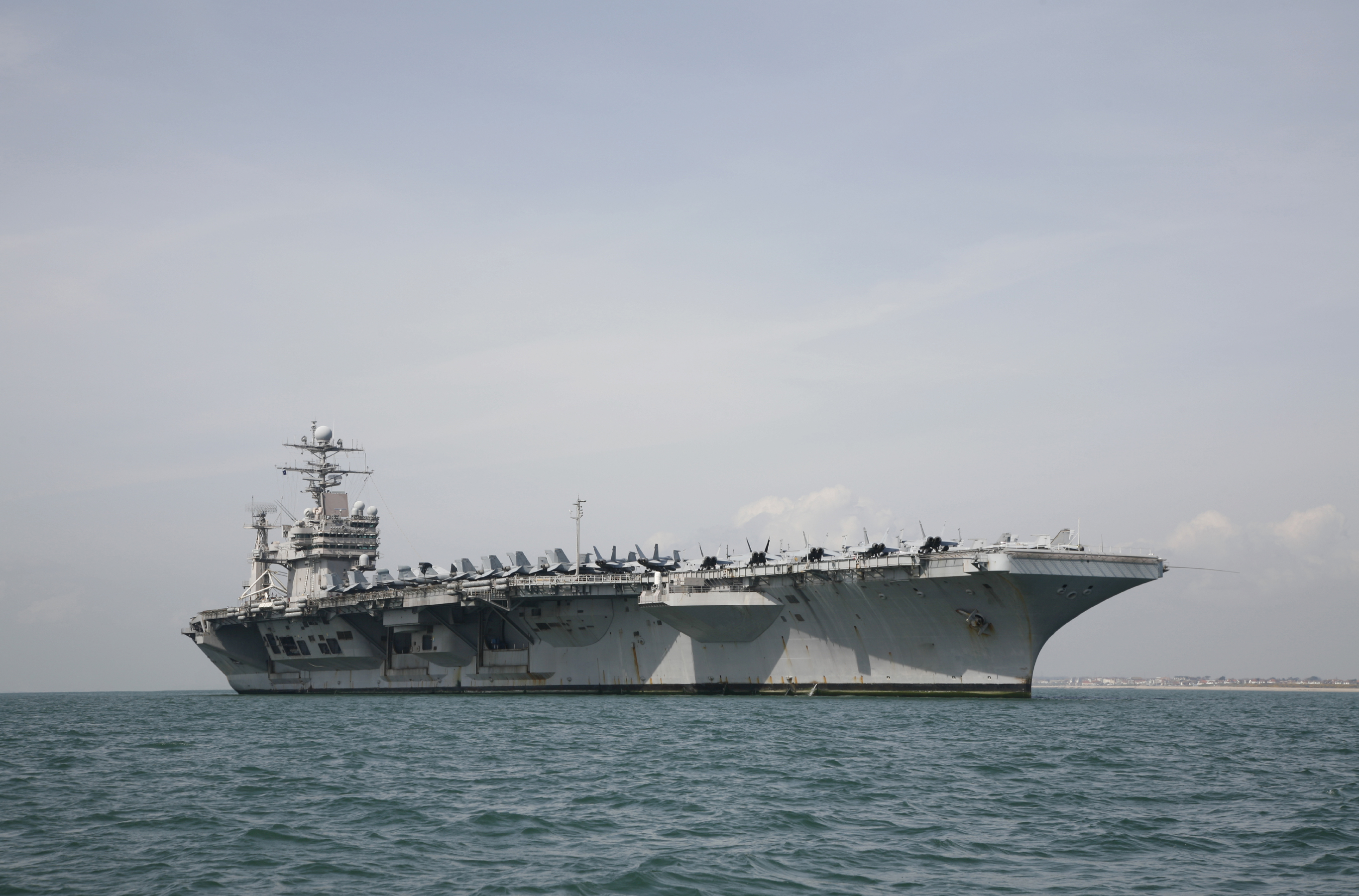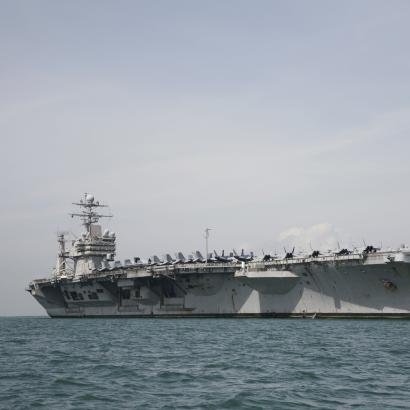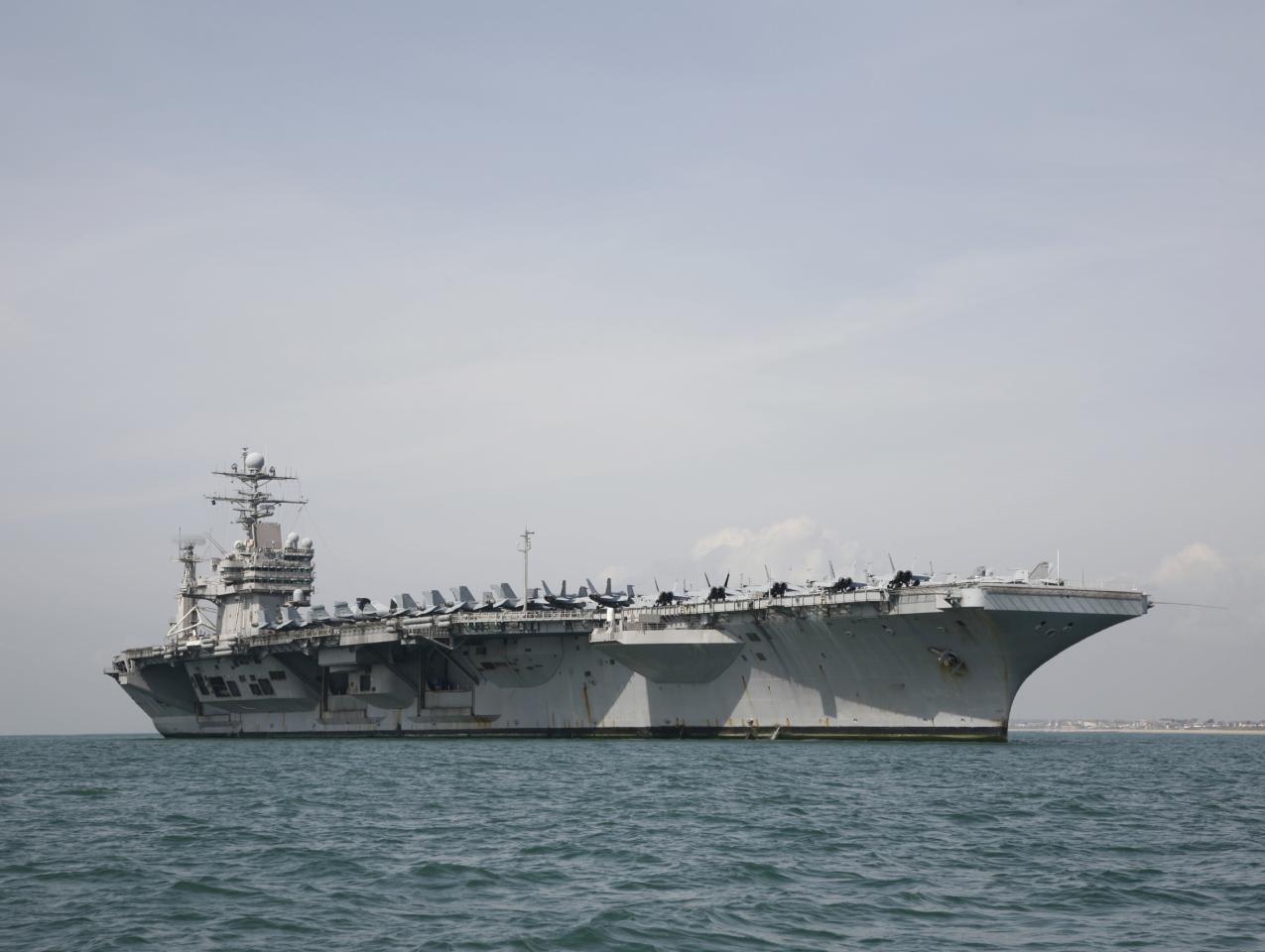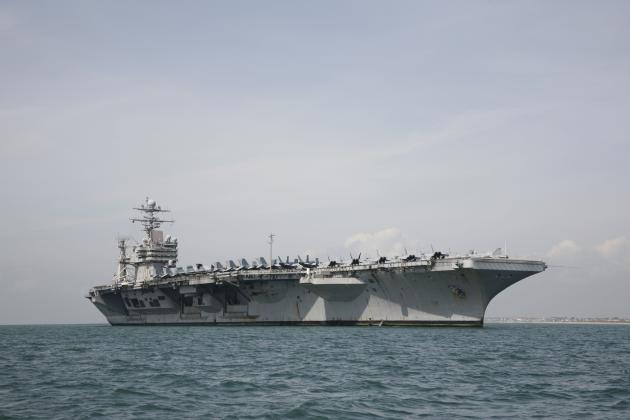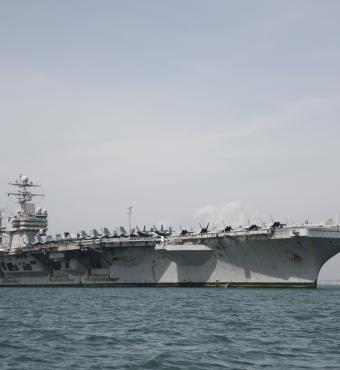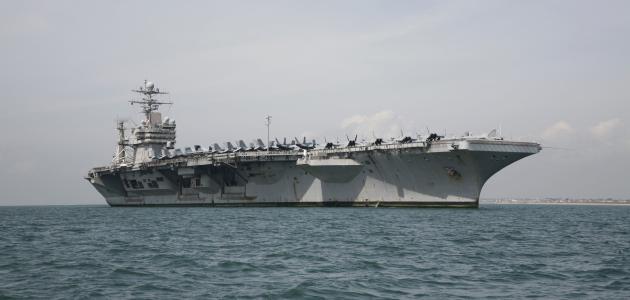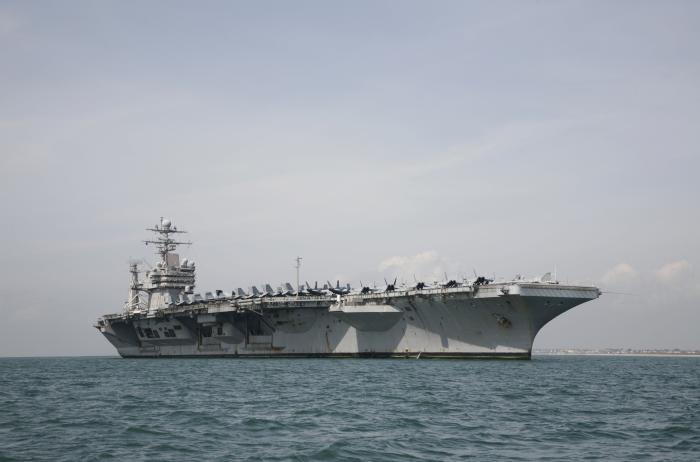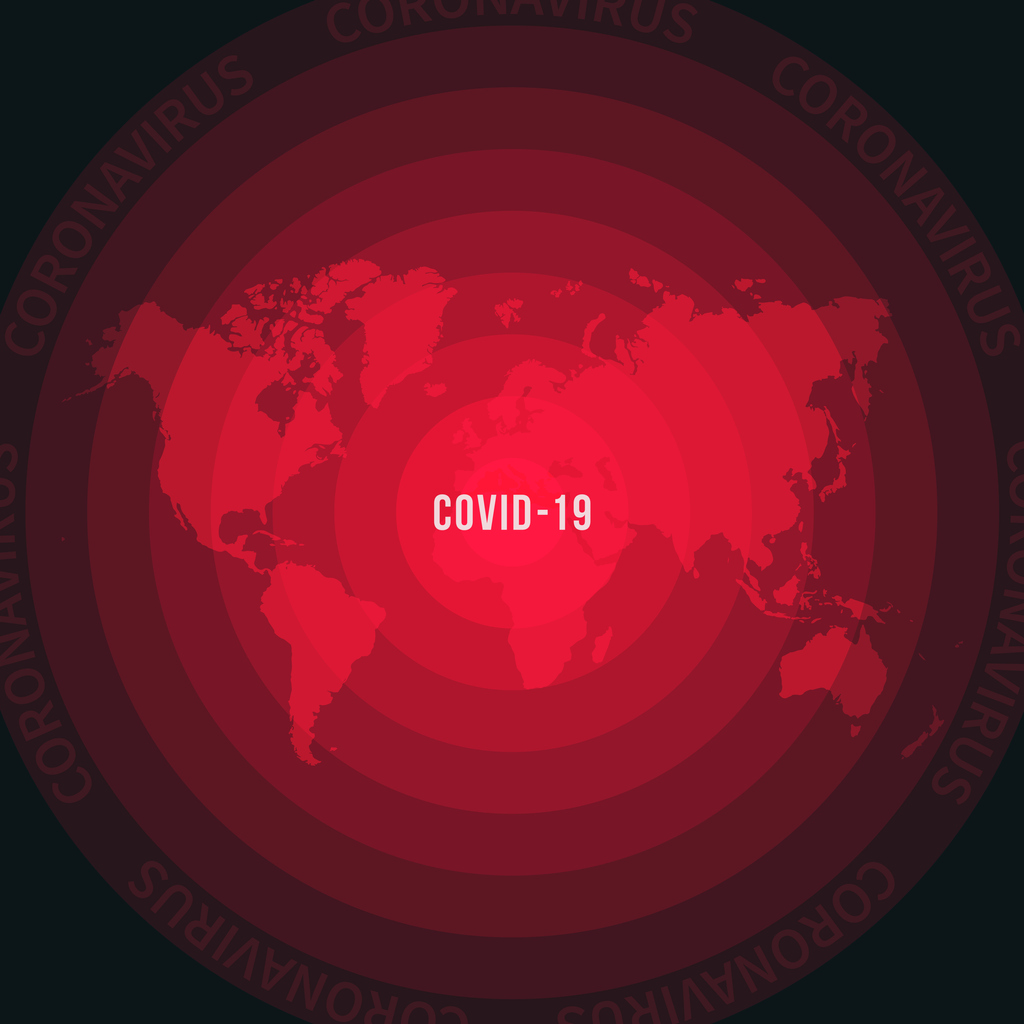National Security Task Force March 2021 Report*
The U.S. military has mounted a major and largely successful effort to maintain readiness for whatever challenges might present themselves despite the COVID-19 pandemic. The world has not stopped while we attend to our nation’s health concerns. The military needs to continue a wide range of activities, including sustaining deterrence capability, conducting counter-terrorism operations, supporting the domestic roles of the National Guard, and being prepared for whatever else might arise. In recognition of this challenge, a high-level DOD COVID-19 Task Force led by the Deputy Secretary of Defense and the Vice Chairman of the Joint Chiefs of Staff was established and has met three-to-five times a week since early 2020 to oversee the military response to the pandemic and provide guidance to commanders in the field.
This report on the effort to maintain readiness in the face of the COVID-19 pandemic is based on interviews conducted in the summer of 2020 with senior military health officials in the Pacific and Atlantic regions and members of the DOD COVID-19 Task Force, follow-up with the Task Force in the spring of 2021, and publicly available information. We plan to continue to report on this subject as the pandemic and the fight against it evolves.
The military services have not been seriously degraded by the virus. General John Hyten, Co-Chair of the DoD COVID-19 Task Force, said publicly in May, 2020 that “We are ready for every threat that potentially we would face today in the world.” This continues to be the assessment in the spring of 2021, as the advent of vaccines introduces a new phase in the fight against the virus. As of March, 2021 approximately 165,000 COVID-19 cases have been diagnosed, with 24 deaths, among 2.1 million military personnel (a rate of about 11 deaths per million, versus about 80 deaths per million attributed to COVID-19 in the age 18-39 cohort of the broader U.S. population, and 1650 deaths per million in the country as a whole). The infection and death rates for the military are low in part because of intensive measures undertaken to preserve the health of the force, and in part because most of the military is young, fit, and healthy. (COVID-19 death rates for the broader DOD population of non-military civilian personnel and contractors are commensurate with national averages for those demographics.)
Given the overall level of social uncertainty brought on by the outbreak of the virus, DOD early on adopted a strategy of public transparency in dissemination of guidance to services, openly posting materials online with periodic updates. Commanders are given force health protection guidance based on the measures recommended by civilian authorities at the Centers for Disease Control and Prevention, and have flexibility to implement and adapt these measures as they deem appropriate to continue their mission and protect the health of their people:
- Social distancing and face covering are mandated and practiced.
- Large numbers of active duty and civilian personnel are teleworking.
- Individual and small group training continues.
- Large scale exercises were cancelled or postponed; some have resumed while practicing COVID-19 protocols.
- Some tabletop exercises have been moved on-line.
In some locations conditions permit operations close to normal; in other areas commanders make decisions on mitigation measures based on local conditions.
In the spring of 2020 basic training was suspended or scaled back while new procedures were developed and put in place, including placing new recruits in quarantine for 14 days before initiation of group training while conducting some activities by video during this time. These procedures have proved effective, and some may be continued after the pandemic. Recruitment and basic training are back to normal levels of operations, and all the services met their recruiting targets for 2020.
While ships are known to foster the spread of the virus (“floating petri dishes”), access control can mitigate this risk and measures are in place to prevent infected sailors and marines from going to sea. Crews are quarantined for 14 days and tested before ships deploy. At sea, social distancing is practiced to the extent possible, ships have testing capabilities, and shipmates tend to enforce protocols with their peers out of concern for the unit and the mission. In the early months of the pandemic, when fomite-based transmission was believed to be an important disease vector, incoming ship supplies were held in quarantine and disinfected before use. And the use of temporary specialist contractors was reduced in favor of crew self-sufficiency where possible. These mitigation measures do not eliminate risk, but have proven to reduce it to manageable levels. Ships for the most part have been able to carry out their missions. The Army took similar precautions before resuming major collective training exercises, including two weeks of quarantine before deployment.
One response to the pandemic ashore has been to keep ships at sea, without port calls. Following a record-breaking deployment (215 days at sea), the crew of the USS Stout reported that the experience was stressful as the ship continued to conduct operations and remain mission-ready. Some Army units also saw extended deployments. An armored brigade team dispatched to Europe for a 90 day exercise was extended to nine months in the theater in order to be the armored component of another rotation, to obviate the need to bring other units to Europe and risk spreading the virus. Again the long deployment caused strife as the team adapted to the mission.
Government-funded travel was stopped in the spring of 2020. The stop order was gradually lifted for specified facilities and countries as they met criteria for resuming travel, based in part on the prevalence of the virus at the origin and destination. This has allowed some exercises to resume. Travel is not expected to return to pre-pandemic levels, however, as many activities that once required travel are now performed by telework. As in civilian society, the military services and the DOD have transitioned many tasks from offices to telework, and found that in many cases telework is effective and efficient and will probably continue after the pandemic subsides.
As is the case for the rest of society, widespread social distancing, wearing of face coverings/masks, testing, tracing, and isolation/quarantine enable activities necessary to sustain readiness to go forward without increasing the spread the virus. DOD has rapidly expanded its testing capability to permit testing of personnel prior to deployment or training, testing of individuals with COVID-19 symptoms, and testing of asymptomatic personnel to support a program of surveillance to monitor transmission among the force and guide contact tracing and mitigation measures.
At any time, if it should become necessary, the military services could “play hurt.” Given what we now know about the virus and measures to counter it, ground, sea, and air units could perform their missions as required if challenged.
Early warning and early action
The US military presence in areas around the world where the virus emerged and became active gave local commanders early visibility on the virus and on the mitigation responses that were put in place by various host regions.
Medical personnel at United States Forces Korea paid close attention to intelligence on infectious diseases in China, to reports from the CDC and WHO, to reports of early cases of infection in South Korea, and to the latest scientific studies to anticipate the course of infections. The medical team worked closely with the USFK Commander to get in front of the problem and institute control measures early such as practicing social distancing and isolation of confirmed cases, foregoing large exercises while continuing small unit training, and providing clear guidance to all personnel. Staying ahead of the curve allowed USFK to continue to operate with few infections. Military aircraft continued to fly, armored vehicles continued to move, small-scale training proceeded, and the force is ready to fight.
Medical personnel with the Seventh Fleet, headquartered in Japan, emphasized the importance of early action, moving quickly to initiate measures following the initial reports of a new virus, and learning about the special characteristics of the virus and unique problems for ships from the early experience of cruise ships and the USS Theodore Roosevelt aircraft carrier.
Commanders in Europe also took early action. An early and restrictive lock-down was imposed on U.S. forces in Italy, which was successful and served as a model for action in Germany and elsewhere as the virus spread in the region. A major exercise underway was scaled back, and other exercises cancelled, to protect the health of the force and avoid bringing the virus into other countries. Extensive testing was used to track the prevalence of the virus and guide decisions on imposition of restrictive measures. The testing program was supported by an early build-up of PPE, reagents, and swabs, and made efficient use of these resources by pooling 5-10 samples together, prioritizing population-level monitoring over individual clinical results.
In Europe and in the Pacific, DOD’s relative success in rapidly scaling up testing capacity in early months of the pandemic hinged in part on the ability to draw on existing military lab and medical facilities across the globe. The testing data informed decisions to balance force health protection and readiness, and set conditions for resumption of training activities.
Treating the fight against the virus like a combat operation
The guidance from the Commander of United States Forces Korea called for everyone to treat the virus as the enemy in a combat operation:
- Issue clear commander’s intent.
- Build a shared understanding through routine updates.
- Flatten communications (tell everyone up the chain what they need to know).
- Institute control measures.
- Allow freedom of action and disciplined initiative at the lowest level.
- Execute with the speed and violence of action.
With this approach, USFK successfully contained the spread of the virus and has remained combat ready.
The Navy issued comparable guidance that emphasizes:
- Knowing the threat posed by the virus.
- Measures on ships and ashore to curtail its spread.
- Data driven risk management, updated frequently.
- Personal accountability.
- Minimizing the risk to the force and to the mission.
As in civilian responses, the US military transitioned from a model of temporary, rapid response to one of sustained management as the virus persisted over months. From the Pentagon, the Department of Defense COVID-19 Task Force invested in the development of a model to predict the progression of the virus in the coming weeks. By late 2020 the Task Force had accurate three-week forecasts to support decisions on mitigation measures, exercises, travel, and support of state and local COVID-19 efforts.
Moreover, like a combat operation, DOD went to war with the force that it had—including limited stockpiles, exposure of just-in-time supply chains, logistic capabilities, access to medical facilities, and personnel. There were many early calls to draw on military capabilities to support an overwhelmed federal government and local emergency civilian response, and aid was in many circumstances rendered, for example by lending management personnel in the interagency process, advising on logistics, and in providing surge medical staff in early hotspots. Our interlocutors noted that unlike heavy equipment, there is rarely an excess of military medical personnel—every service member loaned to aiding a civilian response was one less available to help manage DOD’s own considerable pandemic response needs. Nevertheless, DOD support for the civilian response has expanded to include providing up to 100 teams of service members to support the Federal Emergency Management Agency in administering COVID-19 vaccinations at community vaccination centers around the country. This is in addition to the National Guard troops who have helped distribute food and PPE, supported contact tracing and testing, supported patient care, and now assist with vaccine administration.
Tradeoffs and risks
Decisions on exercises of U.S. and South Korean forces illustrate the complex tradeoffs and risks involved in maintaining readiness in a pandemic. A scheduled computer-simulated command post joint exercise was cancelled in the spring of 2020 due to COVID-19 concerns. While cancellation of the exercise likely adversely affected both forces, a judgement was made that going forward with the exercise during a pandemic posed a greater threat to their health and readiness. Later in 2020 and in the spring of 2021, smaller computer-simulated exercises involving U.S. and South Korean forces were conducted, without the usual augmentation of troops transported from the United States in order to prevent the introduction of infected personnel. The change in the nature and size of the exercises reduced the benefits, and computer simulations themselves were not without risk, as they involved troops working together indoors.
Separate from the joint command post exercises, U.S. and South Korean forces conduct small field training events to maintain readiness and interoperability during the pandemic.
Another instructive example of tradeoffs concerns a National Guard Stryker Brigade Combat Team in Washington state whose scheduled field training in California in 2020 was cancelled when the unit was activated to assist civilian authorities in responding to COVID-19 in the Seattle area. Subsequently, individual battalions have been added to various rotations slated for 2021, ensuring that all the soldiers will receive their combat training.
Vaccination
Like the rest of the world, the military establishment sees vaccination as a major step toward resumption of certain activities. The large military medical research enterprise and DOD’s contracting authorities made substantial contributions to the development of the COVID-19 vaccines. The Department of Defense is one of the 64 jurisdictions to which the federal government is allocating vaccines, and doses are now beginning to be administered to military personnel. DOD has developed a vaccination plan, with criteria and priorities, which is being executed as vaccine becomes available and will be ramped up as supplies increase. Priorities are based on CDC guidance and on maintenance of essential national security functions. DOD is considering how vaccinated personnel should be treated, including adjustments to pre-deployment quarantine timelines.
Military personnel are not required to receive the vaccine when it is offered. Vaccination is voluntary under an emergency use authorization by the Food and Drug Administration. Senior military officials have told Congress that early data suggests that approximately two thirds of service members offered the vaccine have accepted it. The vaccination rate is higher for units preparing for deployment. About 80% of the 5000 members of the Dwight D. Eisenhower Carrier Strike Group agreed to be vaccinated in February in preparation for deployment. Sailors on other ships preparing for deployment had rates near 90%.
For comparison, a recent survey published by the Kaiser Family Foundation found that about 55% of the general population has been vaccinated or wants to be vaccinated as soon as possible. For the 18-29 age group, to which many service members belong, the survey found that 41% of the general population want to be vaccinated as soon as possible.
Senior military officials have said publicly that they would like to make COVID-19 vaccinations mandatory as soon as they can, just like the required flu and other vaccinations.
Looking to the future
The DOD COVID-19 Task Force is preparing a strategic review of the response to the pandemic, including lessons learned. Following high-level approval, a version will likely be publicly released. In the meantime, our interviews with officials in the field and at the Pentagon suggest the following conclusions:
- Fighting the virus as the enemy in a combat operation has proven to be a successful strategy for COVID-19. Looking to the future, however, caution is advised as the next virus with different transmission and lethality characteristics could pose a fundamentally different challenge.
- Early action has big advantages. Early imposition of restrictive measures, with rigorous implementation, can keep infection of military units to a manageable level.
- Traditional public health measures (social distancing, quarantine, face covering, testing, etc.) have proven useful. They can be adapted to fit the varying needs of individual services and units, and have proven effective in reducing risk of infection to a manageable problem. Professional service members are observed to have higher compliance with behavioral guidelines than the general public does, looking to protect the unit and the mission, making these particularly effective tools.
- Providing guidance to commanders, based on CDC guidance to public health authorities generally, and giving commanders responsibility to make decisions on how best to continue their missions and maintain the health of their personnel, based on local conditions, has proven effective. Considering such tradeoffs and making such decisions, including those with life and death implications, are not unusual for commanders. This is consistent with the long-standing tradition of pushing information and decision making to the commander level.
- Technology has considerable potential for improving the response to future pandemics. An example would be the recent development by the Defense Innovation Unit of a watch-like device that makes measurements and uses artificial intelligence to identify whether the wearer has contracted a COVID-19 infection 48 hours before symptoms appear.
- The US military does not operate in a vacuum. Service members have families in schools, bases are serviced by local civilian staff and technicians at home and abroad, vendors are subject to global supply chain disruptions, and cooperation with allies and partners is subject to local institutions, rules, and force fitness. Notwithstanding special mitigation measures, the dynamics and severity of the virus in military communities at any given time is directly affected by that in host communities.
- In a future pandemic the effect of the virus on the capabilities and readiness of potential adversaries can be considered when assessing the readiness of U.S. forces.
- There is little substitute for preparation. The pandemic has demonstrated the crucial importance of stockpiling supplies for the military as it has elsewhere in the civilian response. There were widespread shortages of DOD stocks of PPE early in the pandemic as the military establishment struggled to meet increasing demand. An innovative process was developed to predict demand and find suppliers to meet DOD needs and support provision of protective equipment to civil agencies as well for use at testing facilities and nursing homes. By late 2020 DOD had built a four-month supply of PPE in anticipation of further waves of the pandemic.
- Investment in the capability to model the progress of the virus and make forecasts three weeks into the future has proven useful in making decisions on mitigation measures, exercises, travel, and support for civilian authorities.
- A priority for the future will be for military and civilian agencies to plan to work closely together to focus intensively at the outset on investigation and research designed to learn more quickly the special characteristics of novel viruses (such as the asymptomatic transmission and aerosol transmission of SARS-CoV-2). In retrospect, a research program that led to earlier appreciation for the importance of purifying indoor air would have more than paid for itself, by facilitating early adoption of measures tailored to the threat. Even for the present pandemic, research aimed at understanding SARS-CoV-2 as it mutates could be crucial, as the current mitigation measures may need to be modified or perhaps reinvented to remain effective.
*This paper is the result of a collective effort under the auspices of the Hoover Institution’s National Security Task Force. David Fedor and Admiral James Ellis participated in the interviews and the drafting of this report, which also benefited substantially from reviews and comments of other participants in the Task Force.






